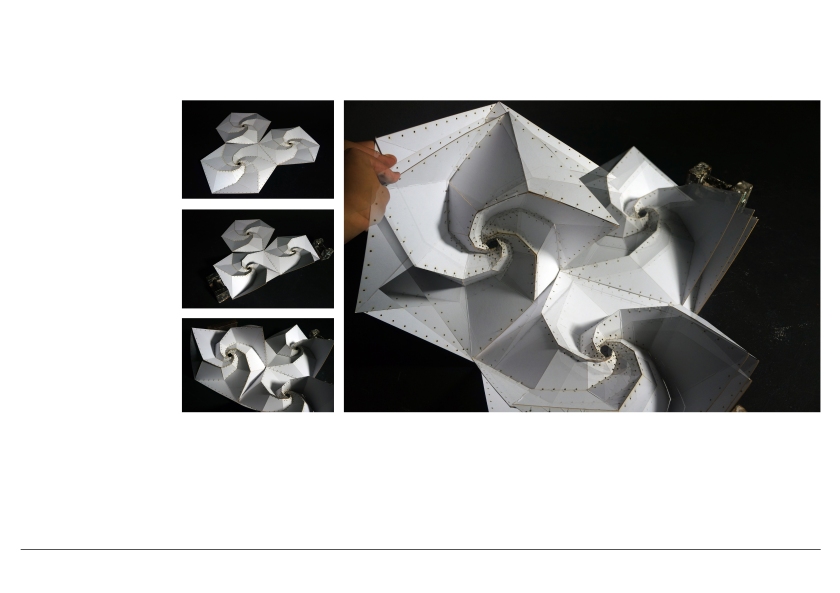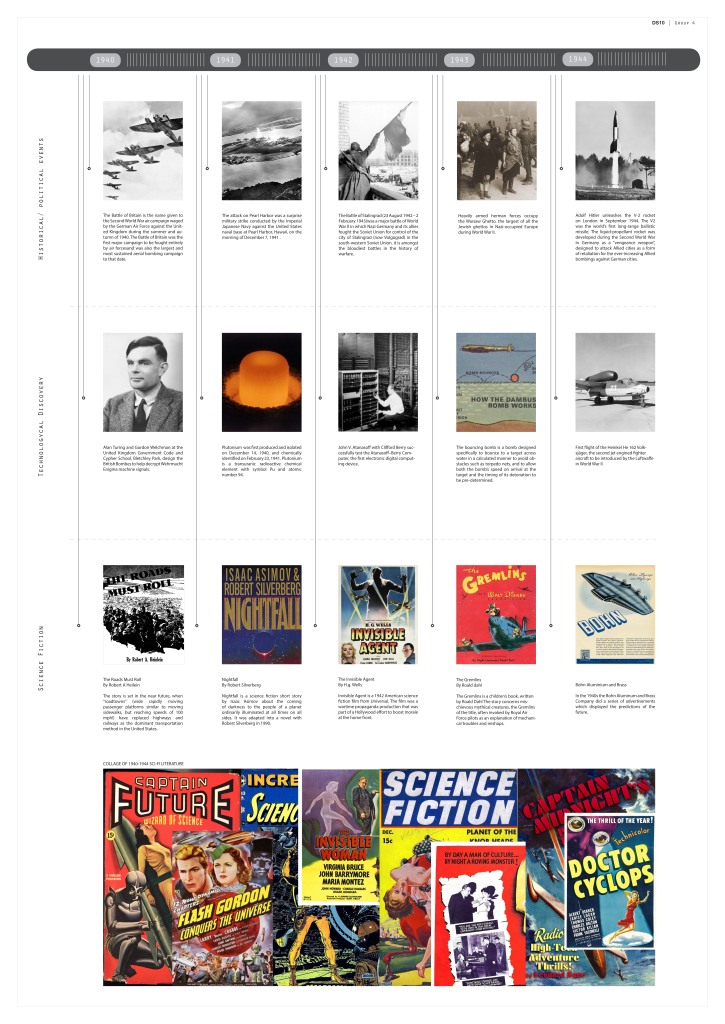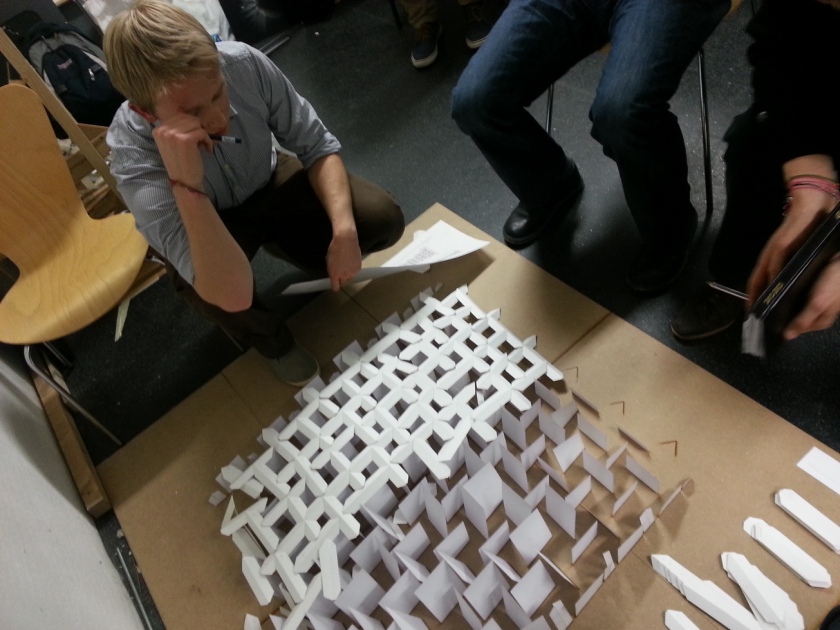First developed in 1979 by Dániel Erdély the Spidron is created by recursively dividing a 2-dimensional hexagon into triangles, forming a pattern that consists of one equilateral followed by one isosceles triangle. The resulting form is of six Spidron legs that, when folded along their edges, deform to create a 3-dimensional Spidron.
Initial investigations into the Spidron system using paper resulted in irregular shapes that could not be predicted, and therefore replicated precisely. Progressing onto using rigid materials allowed the system to be broken down into six components, removing unnecessary triangulated fold lines, and developing latch folded Spidron that is precisely the same as that formed parametrically.
This relationship between parametric and physical tests of component based Spidrons in both regular and irregular hexagons, as well as various other equal-sided shapes, has enabled the development of large scale models concluding thus far in a 1:2 scale version being built which will continue to be developed as a pavilion for submission to the Burning Man festival.
In parallel there has been an investigation into the system at a smaller scale allowing for the Spidron nest to be made as one component. In order to achieve the 3-dimensional Spidron form lattice hinges, also known as kerf folds, have been employed. Rigorous testing into the best cutting pattern have resulted in a straight line cutting pattern that allows for bending on multiple axis at once.
Developing this smaller scale system for submission to Buro Happold the intention is to create an arrayed system that is a conglomeration of both regular and irregular spidrons with varying depths and apertures that are able to integrate various display models etc. within.



































 Above: Emma Whitehead’s convection cells sectional models
Above: Emma Whitehead’s convection cells sectional models Above: Michael Clarke’s Parametric Abeille’s Vault
Above: Michael Clarke’s Parametric Abeille’s Vault






















 Above: Andrei Jipa’s crystal formation and soap interference.
Above: Andrei Jipa’s crystal formation and soap interference.



























































































































































